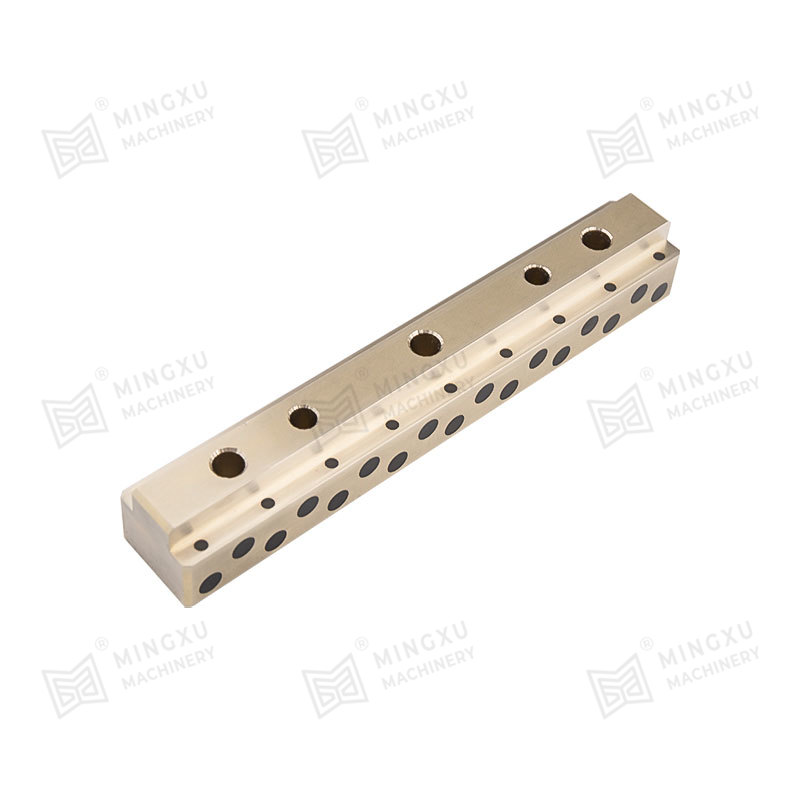The wear rates of graphite bronze plates can vary significantly under different operating conditions. Here are some key factors and corresponding operating conditions that influence the wear rates:
Load Conditions:
Low Load:
Wear rate is generally low as the self-lubricating properties of graphite effectively reduce friction.
High Load:
Increased load can lead to higher wear rates due to greater stress on the material, although the presence of graphite can help maintain a lower wear rate compared to non-lubricated metals.
Speed Conditions:
Low Speed:
Wear rate is typically low because there is sufficient time for the graphite to form a lubricating film on the surface.
High Speed:
Wear rate may increase due to higher friction and heat generation, potentially causing degradation of the graphite and bronze matrix.
Temperature Conditions:
Room Temperature:
Wear rate is relatively stable and low, benefiting from the optimal performance of both bronze and graphite.
High Temperature:
Elevated temperatures can increase wear rates as the bronze matrix may soften and the graphite may oxidize or degrade.
Lubrication Conditions:
Dry Conditions:
Wear rate is moderate, with graphite providing some lubrication but potentially wearing away faster without external lubrication.
Lubricated Conditions:
Wear rate is significantly reduced, as additional lubrication helps to maintain low friction and wear.
Environmental Conditions:
Corrosive Environment:
Wear rate can increase due to chemical reactions between the environment and the bronze or graphite, leading to accelerated material degradation.
Abrasive Environment:
Wear rate is higher as abrasive particles can cause more significant physical wear on the surface of the plate.

Contact Surface Conditions:
Smooth Contact Surface:
Wear rate is lower as there are fewer asperities to cause abrasive wear.
Rough Contact Surface:
Wear rate increases due to more abrasive interactions between surfaces.
Intermittent vs. Continuous Operation:
Intermittent Operation:
Wear rate may be lower due to periods of rest allowing for the recovery of lubricating films.
Continuous Operation:
Wear rate may be higher due to continuous stress and limited recovery time for the self-lubricating properties.
Empirical Data and Studies:
To get specific wear rate values, empirical testing under controlled conditions is required. Wear rates are often measured in terms of volume loss per unit distance (e.g., mm³/N·m) or weight loss over time.
The wear rates of graphite bronze plates depend on a combination of load, speed, temperature, lubrication, environmental conditions, surface finish, and operation type. Each factor can significantly influence the performance and longevity of the material in practical applications.




 English
English Español
Español
















Contact Us